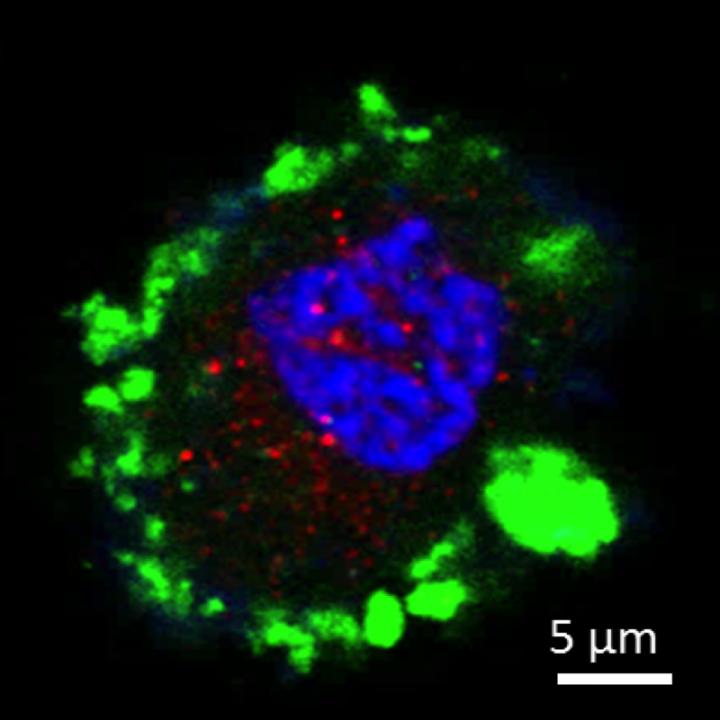Probiotic helps treat diabetes in rats, could lead to human remedy

This is an image showing a rat cell re-programmed to express HNF-6 (red) and insulin (green). The nucleus is stained blue. Re-printed with permission from Diabetes. Credit: Re-printed with permission from Diabetes. Cornell University
In the study, published Jan. 27 in the journal Diabetes, the researchers engineered a strain of lactobacillus, a human probiotic common in the gut, to secrete a Glucagon-like peptide 1 (GLP-1). They then administered it orally to diabetic rats for 90 days and found the rats receiving the engineered probiotic had up to 30 percent lower high blood glucose, a hallmark of diabetes.
The study was a proof of principle, and future work will test higher doses to see if a complete treatment can be achieved, said John March, professor of biological and environmental engineering at Cornell University and the paper's senior author.
The researchers found that upper intestinal epithelial cells in diabetic rats were converted into cells that acted very much like pancreatic beta cells, which monitor blood glucose levels and secrete insulin as needed to balance glucose levels in healthy individuals.
“The amount of time to reduce glucose levels following a meal is the same as in a normal rat, … and it is matched to the amount of glucose in the blood,” just as it would be with a normal-functioning pancreas, March said. “It's moving the center of glucose control from the pancreas to the upper intestine.”
Also, though it replaces the insulin capacity in diabetic rats, the researchers found no change in blood glucose levels when administered to healthy rats. “If the rat is managing its glucose, it doesn't need more insulin,” March said.
This technology was licensed by the BioPancreate, a wholly-owned subsidiary of Cortendo AB, a biopharmaceutical company incorporated in Sweden and based in Radnor, Penn., which is working to get the therapy into production for human use.
Human patients would likely take a pill each morning to help control their diabetes, March said.
###
The study is funded by the National Institutes of Health and the Hartwell Foundation.
Cornell University has television, ISDN and dedicated Skype/Google+ Hangout studios available for media interviews.
Media Contact
All latest news from the category: Life Sciences and Chemistry
Articles and reports from the Life Sciences and chemistry area deal with applied and basic research into modern biology, chemistry and human medicine.
Valuable information can be found on a range of life sciences fields including bacteriology, biochemistry, bionics, bioinformatics, biophysics, biotechnology, genetics, geobotany, human biology, marine biology, microbiology, molecular biology, cellular biology, zoology, bioinorganic chemistry, microchemistry and environmental chemistry.
Newest articles

Bringing bio-inspired robots to life
Nebraska researcher Eric Markvicka gets NSF CAREER Award to pursue manufacture of novel materials for soft robotics and stretchable electronics. Engineers are increasingly eager to develop robots that mimic the…

Bella moths use poison to attract mates
Scientists are closer to finding out how. Pyrrolizidine alkaloids are as bitter and toxic as they are hard to pronounce. They’re produced by several different types of plants and are…

AI tool creates ‘synthetic’ images of cells
…for enhanced microscopy analysis. Observing individual cells through microscopes can reveal a range of important cell biological phenomena that frequently play a role in human diseases, but the process of…





















